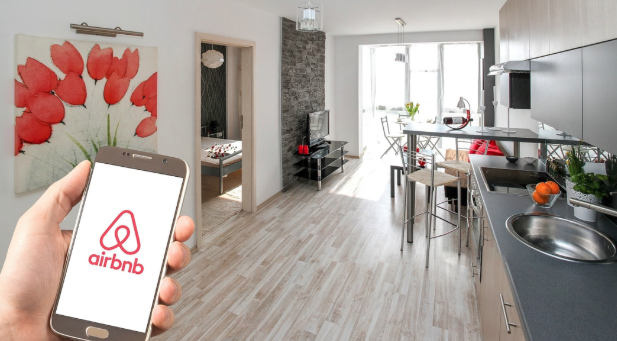Building a financial model for a hotel investment is a vital process that helps investors, developers, and operators forecast potential returns, manage risks, and make informed decisions. A well-structured financial model can provide insights into operating performance, cash flow, and investment viability. Looking for hotel financial model template? We have built one for you which you can access here. Otherwise he is a step-by-step guide on how to build a hotel investment financial model
What is a Hotel Investment Financial Model?
A hotel investment financial model is a quantitative tool that simulates the financial performance of a hotel over time. It typically encompasses revenue projections, expense estimates, cash flow analysis, and key performance metrics. This model helps stakeholders evaluate the feasibility of a hotel project, assess risks, and identify opportunities for maximizing returns.
Key Components of a Hotel Investment Financial Model

- Revenue Projections: Estimates of income generated from room bookings, food and beverage services, and other ancillary services.
- Operating Expenses: Costs associated with running the hotel, including fixed and variable expenses.
- Capital Expenditures (CapEx): Long-term investments in property improvements and equipment.
- Financing Assumptions: Details about debt, equity financing, and interest rates.
- Key Performance Indicators (KPIs): Metrics like Revenue Per Available Room (RevPAR), Average Daily Rate (ADR), and occupancy rates.
How to Build a Hotel Investment Financial Model?

Step 1: Define Your Assumptions
Start by outlining key assumptions that will drive your financial model. These should include:
- Hotel Size: Number of rooms and facilities (restaurants, meeting rooms, etc.).
- Location: Market characteristics, tourism demand, and competitive landscape.
- Revenue Drivers: Projected room rates, occupancy rates, and revenue from other services.
- Operating Expenses: Fixed and variable costs associated with hotel operations.
- Capital Structure: Proportions of debt and equity financing, interest rates, and loan terms.
Hotel Investment Financial Model: Example of Assumptions
- Number of Rooms: 100
- Average Daily Rate (ADR): $150
- Occupancy Rate: 75%
- Revenue from Food and Beverage: 30% of total revenue
- Operating Expenses: 60% of total revenue
- Debt Financing: 70% of total project cost at an interest rate of 5%
Step 2: Structure Hotel Financial Your Model
Organize your model in a spreadsheet to ensure clarity and ease of use. Common sections to include are:
- Input Assumptions: A section for all key assumptions.
- Revenue Projections: Detailed forecasts of room and ancillary revenue.
- Expense Projections: Itemized operating expenses.
- Capital Expenditures: Schedule of expected CapEx.
- Financing: Outline of debt and equity financing.
- Cash Flow Statement: Summary of inflows and outflows over time.
- Key Performance Metrics: Summary of important KPIs.
Step 3: Create the Input Assumptions Sheet
Start by creating an input assumptions sheet where all your key metrics are clearly defined. This will serve as the foundation of your model, making it easy to update and adjust assumptions without affecting the entire structure.
Step 4: Calculate Revenue Projections
Begin forecasting revenue based on your assumptions. For a hotel, primary revenue sources include:
- Room Revenue: Calculated using the formula:
Room Revenue=Number of Rooms×Occupancy Rate×ADR×365
- Food and Beverage Revenue: Estimate this as a percentage of total room revenue or based on historical data.
Example Calculation
Assuming 100 rooms, an ADR of $150, and an occupancy rate of 75%:
Room Revenue=100×0.75×150×365=$4,125,000
If food and beverage revenue is 30% of room revenue:
4,125,000 x 0.30 = $1,237,500
Step 5: Project Operating Expenses
Operating expenses for hotels typically include:
- Fixed Expenses: Salaries, property taxes, and insurance.
- Variable Expenses: Utilities, maintenance, and supplies.
Estimate these costs based on historical data, industry benchmarks, or a percentage of revenue.
Example Expense Structure
Assuming total revenue of $5,362,500 (room + F&B), with operating expenses at 60% of revenue:
Total Operating Expenses= 5,362,500 × 0.60 = $3,217,500
Break down expenses into categories for clarity:
| Expense Category | Amount |
|---|---|
| Salaries | $1,200,000 |
| Utilities | $200,000 |
| Maintenance | $150,000 |
| Supplies | $100,000 |
| Marketing | $100,000 |
| Other | $1,467,500 |
Step 6: Estimate Capital Expenditures (CapEx)
CapEx includes costs for property improvements, renovations, or equipment purchases for hotel development model. Estimate these expenses over the life of the hotel, accounting for both initial investments and ongoing renovations.
Example CapEx Schedule
| Year | Amount | Purpose |
|---|---|---|
| 0 | $1,500,000 | Initial Setup |
| 3 | $300,000 | Renovation |
| 5 | $200,000 | Equipment Upgrade |
Step 7: Outline Financing Structure
Detail your financing structure, including the proportion of debt and equity, interest rates, and repayment schedules. Use the following formulas to calculate debt service and equity returns.
- Debt Service: Calculate annual payments using the loan amount, interest rate, and term. For a simple estimate:
- Equity Returns: Estimate the expected return on equity based on project cash flows.
Example Financing Calculation
For a $10 million project funded by 70% debt at a 5% interest rate over 10 years:
Debt Amount = 10,000,000 × 0.70 = $7,000,000
Calculate annual debt payments using an amortization formula.
Step 8: Create a Cash Flow Statement

Your cash flow statement summarizes all cash inflows and outflows over time. Organize it into sections:
- Cash Inflows: Include total revenue from operations and any financing.
- Cash Outflows: Include operating expenses, CapEx, and debt service payments.
Example Cash Flow Summary
| Year | Cash Inflows | Cash Outflows | Net Cash Flow |
|---|---|---|---|
| 1 | $5,362,500 | $4,217,500 | $1,145,000 |
| 2 | $5,500,000 | $3,800,000 | $1,700,000 |
| 3 | $5,650,000 | $4,300,000 | $1,350,000 |
Step 9: Calculate Key Performance Indicators (KPIs)
To evaluate the hotel’s performance, calculate essential KPIs such as:
- Revenue Per Available Room (RevPAR):
RevPAR = Total Room Revenue / (Number of Rooms×365 )
- Average Daily Rate (ADR):
ADR = Total Room Revenue / Number of Rooms Sold
- Occupancy Rate:
Occupancy Rate = Number of Rooms Sold / (Number of Rooms × 365)
Step 10: Perform Sensitivity Analysis
Given the inherent uncertainty in hotel investments, it’s prudent to conduct sensitivity analysis to see how changes in key assumptions (like occupancy rates, ADR, and operating expenses) impact cash flows and returns.
Create different scenarios (best case, base case, and worst case) to assess potential financial outcomes and risks.
Step 11: Review and Refine Your Model
Once your initial model is complete, review it for accuracy and coherence. Ensure all formulas are correct and inputs are linked properly. It’s also beneficial to seek feedback from industry peers or mentors.
Final Thoughts!
Building a financial model for hotel investments is a comprehensive process. It involves careful consideration of various factors influencing financial performance. By following these steps—defining assumptions, structuring your model, and calculating revenues, expenses, and cash flows—you’ll create a robust financial tool that can guide investment decisions.
As you gain more experience, your models can evolve in complexity to incorporate more advanced techniques and market insights. Regularly updating your model with actual performance data will enhance its accuracy and relevance, ultimately aiding in effective decision-making.
If you are looking for something you can use right away, then we have done the hard work for you and built a ready-to-go Hotel Investment Financial Model Template which is perfect for Founders or Investors to use when deciding on a potential Hotel investment or in trying to value their existing Hotel investments.
Here are some excellent articles you may find useful: Financial Analysis of Hotel Investments, Guide to hotel financial statements, Unraveling the Numbers: A Guide to Hotel Financial Analysis and An Expert Guide to Hotel Financial Statements.



